
When you’re in the market for a bass boat, and you’re planning to look at some used ones, most likely purchasing the one that’s right when you find it, but what do you look for when you’re going to be buying a used bass boat? Don’t worry we’ve got you covered.
This article will cover 21 things that you should check before you decide to hand over the money and drive off with a potential trash heap, These tips are going to be able to help you avoid that experience and get a good boat the first time.
1. Do You Know the Seller?
Sometimes when you’re thinking about buying from a friend, you don’t think that they would try to pull the wool over your eyes, but honestly, you can’t be too safe when you’re in the process of purchasing a boat. But it’s always beneficial if you know the seller because then you would know how they would treat their stuff.
If you know the seller, that’s great, but you still need to go through the checklist just to be sure. It’s even more important when you don’t know the seller that you’re sure that you go through everything. Even if it’s something that you’re sure about, and you’ve seen reviews of the seller, don’t just trust the reviews. You need to physically review the boat and THEN make a decision after everything has been inspected.
2. Inspect the Boat Before Purchasing
Its important that you see the boat and are able to look it over thoroughly before you decide to purchase it. This can be difficuld, especially if you live in a different area than the seller.
Trust me, it will be worth your time to look it over in person. The last thing you need is a brand new (used) broken boat. Sounds like fun? I don’t think so.
When you’re going to go and pick up your boat, you have to make sure that you’re going when the weather is good because if you head out and it’s raining, that gives them a chance to not have you really be able to look at the boat and make sure that everything is up to par.
When it’s raining, it’s hard to be able to check and find the flaws, as well as the stress cracks. That’s why it’s important that you understand that looking in the best weather you can, that way you can be sure that you’re going to get what you need in order to be sure that you’re not getting ripped off.
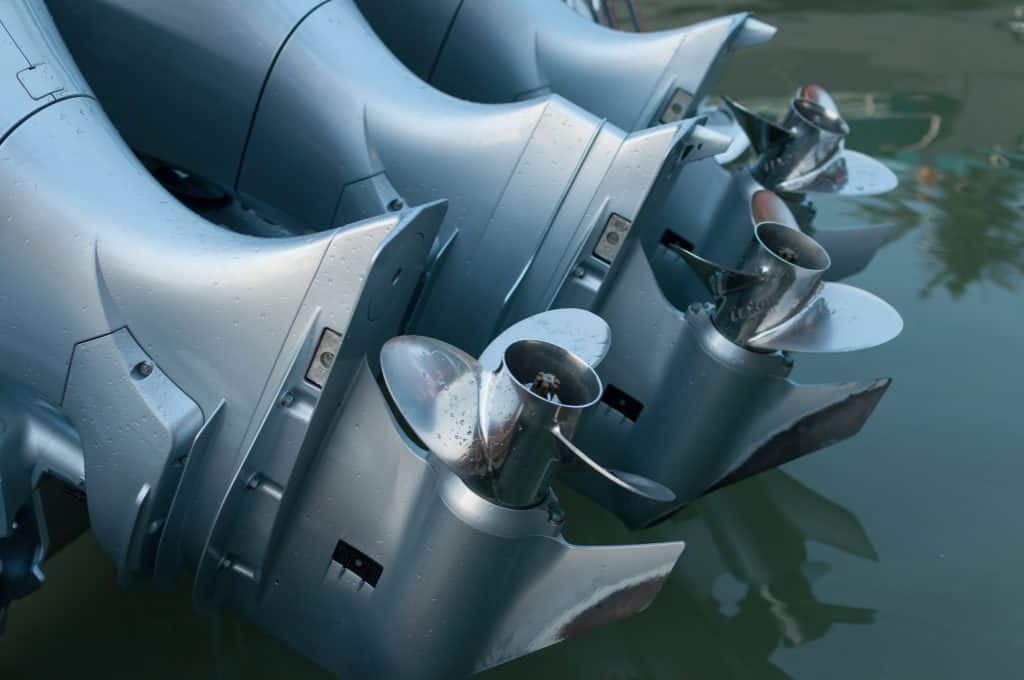
3. Check the Prop
If you’re going to be using this, you obviously have to be sure that you’re going through the right process and that includes checking the prop. If your prop is bent or making a weird noise, or even a knick that’s on a blade can really have an effect on the way that your boat is going to ride.
Your propeller–if it’s damaged–can really drag down your boat and could in the end cause you to be using more fuel than you intended on using. The diameter of the prop, as well as the pitch, are both related to each other, so having the right prop for your boat is very important.
So, don’t be afraid to ask the seller if the prop is new, or if they have replaced it and what the propeller is that they’ve installed and are currently using.
4. Check the Engine Hours
You can take the boat to a dealer to have them check the engine hours. With some newer models, you can have them checked with a computer, but when you’ve got boats that are 1990 or older, they will have a plug insert that a mechanic can use to check the hours.
When you’re looking for the correct and safe number of hours for your engine, there are a few things that you can check. If the hours on the boat are under 250 hours, then the boat is pretty new. 500 to 750 could attest to the boat being used a moderate amount of time. Anything that’s above 750 is a little iffy.
If you’re planning on purchasing a boat that has over 750 hours on it, do it with caution. Be sure that the seller has an accurate and in-depth record of maintenance, particularly the annual maintenance.
5. Crawl Under the Boat
When you’re looking at the boat, you have to be sure that you check underneath. There is a possibility of hitting things, so you have to be sure that they have treated the boat right when they are out on the water.
If the hull has very little scratches and use, then chances are that you’ve got yourself a pretty good boat. Look under the motor and the very back of the pad. Those are the most popular places to hit things in the water. Look under the hull in the area between the tires and the trailer tongue, this is because if your boat is going to hit anything, the most likely place that they will hit, they will be back towards the back of the boat.
There could be potential gouges, scratches or divets in the bottom of the boat which could potentially cause a leak, so you need to be sure that there are not any super deep scratches.
6. Seat Condition
Obviously, when you’re looking at the boat, you want to look at the interior. By doing so, you can see if they really do take care of their boat. If the seats look faded, then it’s most likely been stored out in the elements, which doesn’t really mean that they are too interested in using the cover for their boats.
That’s something that you really need to be aware of. If they have taken the time to cover and store the boat, that’s something that is really good in the boat market, that means that they really have appreciated their boat and make sure that it will stay running.
If the boat has been stored outside in the elements, then that could potentially lead to some problems are over time, so be sure that you’re checking the seats. Also, look for wear and tear. If it’s going to cost more to work on replacing the seats and such then the actual boat, you might want to move on to another boat.
7. Carpet Fade/Fit
Kind of like the seats, it’s important to check how the carpet is, and if there are any loose places that are “bubbling” up. If you have to replace the carpet, it’s going to take a long time, and if you’ve got a full-time job or something like that, it’s going to take even longer.
It’s also not cheap to replace the carpet, so it’s going to be crucial that you make sure that you check out the carpet. Just to be safe, and to make sure that you’re not getting ripped off.
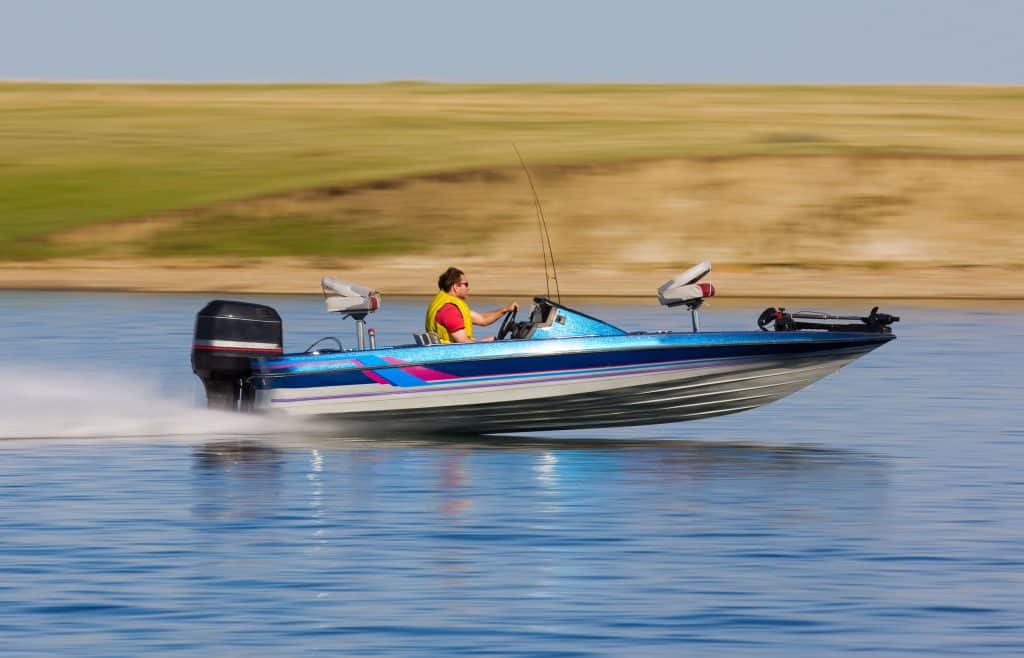
8. Check the steering
Another expensive replacement is the steering. One way that you can check the steering is that you make sure that the engine is alright and that you’re not going to have any issues, you can go and turn the wheel, by doing this, you can see if there are any rough spots or if the engine catches. That’s something that you really don’t want to worry about.
There can be some old cable-steer system, if it’s stiff on the trailer, it’s going to be worse in the water, so you have to be sure that you check this part so that you can make sure that you’re not going to have this boat, and then head out and have the engine malfunction, that would literally be one of the worst things that could happen.
9. Look at the Maintenance Logs
If you’re working with someone who has a pretty detailed log of all the maintenance that they’ve had done on the boat, and that’s definitely something that should make you feel a little better when you’re looking for your “dream” boat.
When you’re looking at the logs, you should be able to tell what type of oil was used for the boat, how long maintenance took, and how long it took for it to be completed, along with how many times a year that the boat was taken in for maintenance.
Be sure that you ask about the spark plugs, lower unit oil, impeller, and four-stroke oil. Those are some things that are important that you are able to check that they have been changed once or twice per year.
10. Check the Compartments
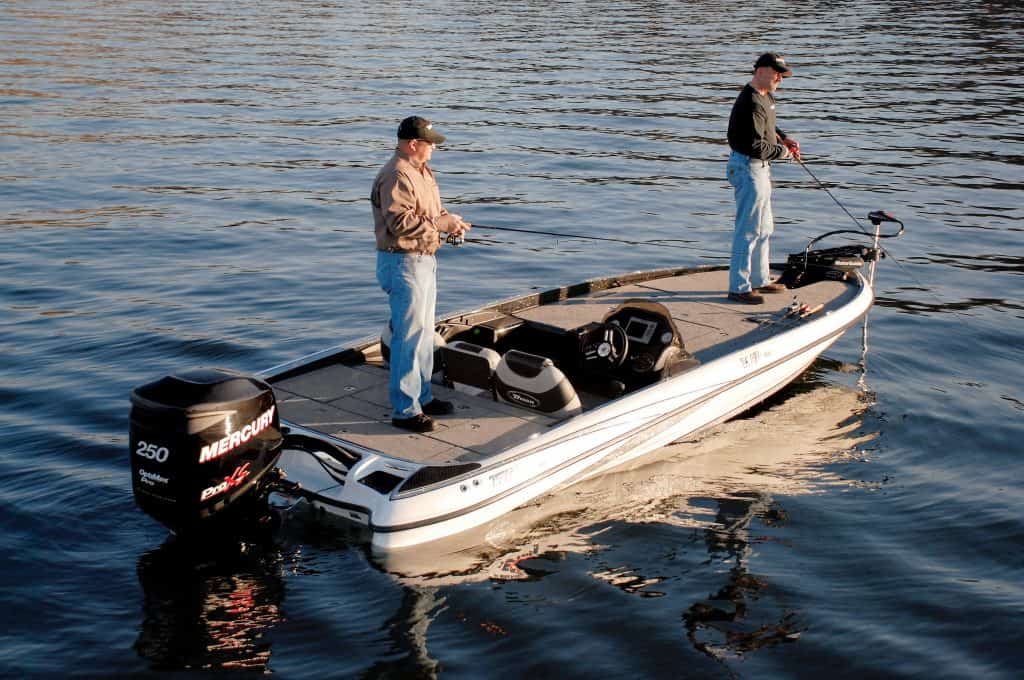
Looking in the compartments is a good thing as well. You can see if there is any mildew, which might indicate that there is a leak, which isn’t the best thing when you’re wanting to float on the water. If you smell a dead animal, you could potentially have some bigger problems than a moldy compartment. Wires and such could have been chewed by this animal.
You don’t want to purchase a boat that has some compartments that could potentially cause some issues with getting your gear wet, and that’s something that you don’t want to have to worry about.
11. Does the Motor have a Warranty?
It’s important to make sure that the engine has a warranty. If there’s something that’s going on with the engine, and you need to somehow replace something that has gone wrong, it never hurts to be sure that you’re going to be covered with a warranty.
If something goes wrong, you’re usually going to be fine during most of the days of the week. But if something happens with your boat on Sunday, it’s going to be a bit harder to find a motor mechanic.
12. Check the Sides of the Boat
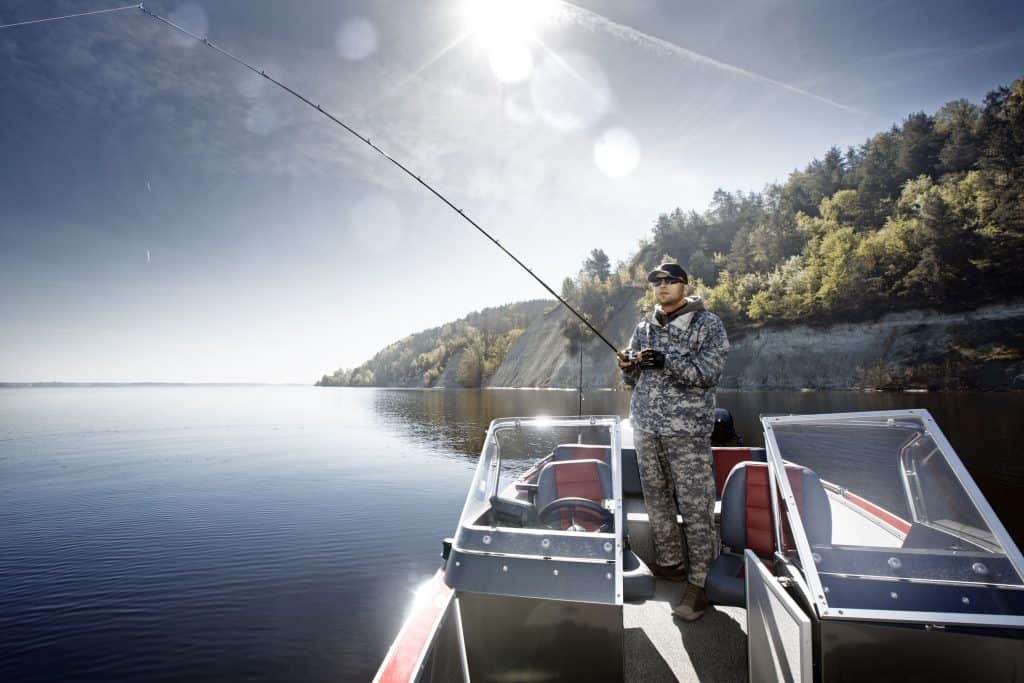
You want to be sure that the transom is good. When you are looking at a fiberglass boat, the transoms could end up being some of the weaker spots on the boat.
If there are some stress cracks that are on the boat, it could mean that it’s going to be a greater risk of giving out. If you’re going to have to get a transom replaced, then you’re going to have to fork out some serious cash.
13. Inspect the Bilge Area and Take a Test Drive
One thing that you can do is to check the bilge and take the water out if there is any water. Then proceed to take the boat out onto the water and go for a little short ride. If you come back, and there’s water in the bilge, it could mean that there is a leak somewhere in the boat, so that’s something that you definitely don’t want to be purchasing.
14. Be Sure to Look at the Electronics
Although electronics are going to have to be replaced eventually, it’s just important that you know what you’re dealing with. In reality, you want to be sure that you’ve got a good structure in case you have to replace or upgrade anything relating to electronics.
15. Look for Hanging Wires
If there are hanging wires, there are definitely some bigger issues that are underneath the surface. You need to be sure that you’re going to have something that’s going to be able to actually do the job of a boat.
16. Check that the Switches Work
If you’ve got a new boat and you’ve got all these switches that aren’t going to have any purpose, then it’s something that you need to check. The navigation lights, and all the toggles, those switches have the tendency to have a bigger likelihood of failing.
17. Check the Trailer For Rust
Hopefully, with your boat, you’re going to get the trailer along with it. If you don’t that would be incredibly awkward. One of the main things that you want to be sure that the trailer is in good condition.
If you’re buying a boat from someone that lives close to saltwater, checking for rust is definitely something that you need to be on the lookout for. Saltwater definitely likes to eat away at the metal.
18. Look Over the Trailer After Launching
After you’ve gone out onto the water, you really want to be sure that the trailer is good. When you look over the trailer, be sure that you check to see if there are any cracked running boards and be sure that the supports are going to be sturdy enough, and haven’t been damaged while you’re putting your boat back up on your trailer.
19. Check the Wheel Hubs on the Trailer
If the wheel hubs are hot, it could be a sign that the trailer is working hard because the tires aren’t fully inflated, or that you’re overloading the trailer. That’s something that you really need to be careful about. You don’t want to ride your brakes when you’re headed downhill, which could help cause the temperature to rise on the wheel hubs.
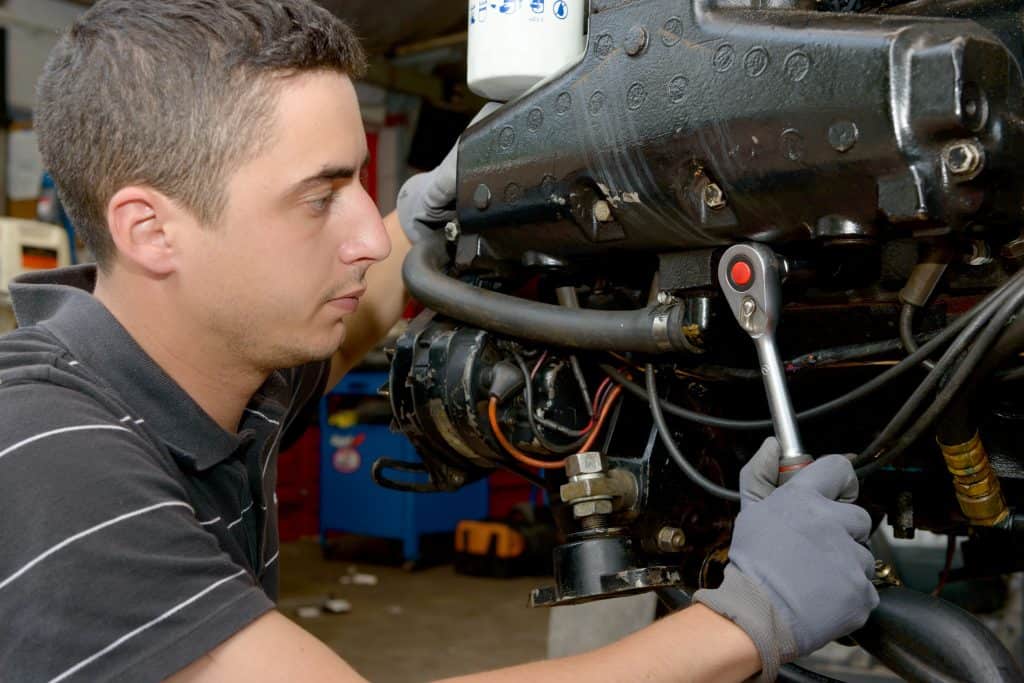
20. Get a Full Background
You really want to be sure that you’re going to get a full background of the boat. Meaning who all owned the boat, what year is the motor, trailer, and boat. If they are the only owner, you should really find out how long they have owned the boat as well.
Check that the boat hasn’t been in a wreck, or had some major work done on it. Also, be sure that you check and make sure that you know if the motor has been worked on. If it’s yes, then you should find out why and who they went to.
21. Check the Lower Unit
Finally, this is something that you should do as well. You want to be sure that you check the lower unit after coming from the lake. If you drain a little grease and there’s no water that comes out with the grease, there could really be a problem.
Just drain some grease, a few little spots so that you can be sure that your lower unit is fine. If pure water comes out, or the grease looks like coffee creamer, there could be some damage that you need to work on just to make sure that your boat can really run well.

These are just some suggestions that you would want to look at if you’re planning on heading out to buy a used boat. Although these are good choices of things to look at, be sure that you’re going to look at some other things that may be a concern. Don’t just choose these things to look at. Be sure that you check the essentials, and that you’re able to go away confident that you’ve made the right purchase.
